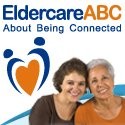

Why Use Cameras?
Cameras can be used to get a good visual picture of how the loved one is doing -- to pick up on clues that might not be obvious from a phone call, for instance. Cameras are also used to see if home health aides or visitors are treating your loved one appropriately.
Wired or wireless
Wired cameras require running wires from the camera to a computer or gateway that will capture pictures, wireless cameras can send information to a wireless access point or computer. Wired cameras are difficult to install and harder to move. Wireless cameras are easy to install and move around.
Fixed or movable
Some cameras are fixed in place and can only view whatever is in front of them, others can be controlled remotely to scan the room on demand. Those that can scan the room make it possible to see more areas with a single camera, thus reducing the need for many cameras.
Number of Cameras and Placement
A system with lots of cameras is more expensive, but make it less likely that something important will happen that the camera cannot "see". A system with numerous cameras leaves the loved one fully monitored. Placing multiple cameras in a few strategic spots that are most likely to allow a remote viewer to know if something is wrong. For instance, placing a camera in the kitchen and one in front of the loved ones favorite chair. Placement of a camera in a bathroom is a touchy issue, but an important consideration since falls often occur in the bathroom. Placing a camera in the bathroom, but pointed at the floor is a good option that provides for privacy. The idea is that this placement will protect privacy but make it easy to see if the person has fallen.
Access to Pictures and Video
Snapshots and video are stored locally on the computer placed in the home location. The loved one has complete control over the viewing of the snapshots and video. The loved one also has the ability to determine the frequency of snapshots or to not take snapshots at all. Access to snapshots and video can be given to remote viewers if desired. Snapshots or video can only be accessed by someone who has been given Internet access and the right id and password.
Storage of Pictures and Video
Video files are very large and take a lot of storage space to archive them. No system is big enough to store all pictures and video indefinitely. During the setup and training we will work with you to determine how long you want to store pictures and video (if at all) and assist with configuring the system to meet your needs and storage capacity.
Relevance of Snapshots and Video
Having a camera and access to snapshots will allow a remote caregiver to "look in on" their loved one. If something does happen, the camera may have captured pictures of it which can be reviewed later.
What About the Loved One?
So what do the loved ones think of all this technology?
Most are very accepting of it. At first that seems puzzling, but when you realize that using always-on cameras are targeting people who are at high risk of institutionalization, many with early stage Alzheimer's. In those cases, the cameras are the last barrier between them and a move out of their home to a more supervised setting. Not surprisingly, they feel that staying at home with cameras monitoring them is a better option than moving somewhere else. Keep in mind that they probably have no less privacy at home with the cameras monitoring them than they would have had in an institution.
This system seems best suited to people whose health has deteriorated as a way to avoid a move to a more supervised setting.
Staging
Sometimes a staged approach could make more sense. Someone who needs a little but not a lot of supervision from someone else might benefit from a system that they can control themselves, like personal emergency response systems. As the risk of institutionalization increases, control could shift to someone else. That could involve using cameras in a system designed to postpone the need to move for someone who is either opposed to or unable to afford to move to a place where they could be supervised in a more traditional way.
Ethical Issues
Clearly the person being monitored must give permission unless they are not mentally capable of giving such permission. There needs to be written permission to install the system as well as explicit instructions about what pictures and other information can be shared with whom. In addition, the person being monitored shall be able turn the system off themselves at any time.
Question:
What about visitors? They never gave permission to be monitored. Do they have to be notified they are under surveillance?
Answer:
Yes. Visitors will be notified by a notice placed on the entry doors to the location.